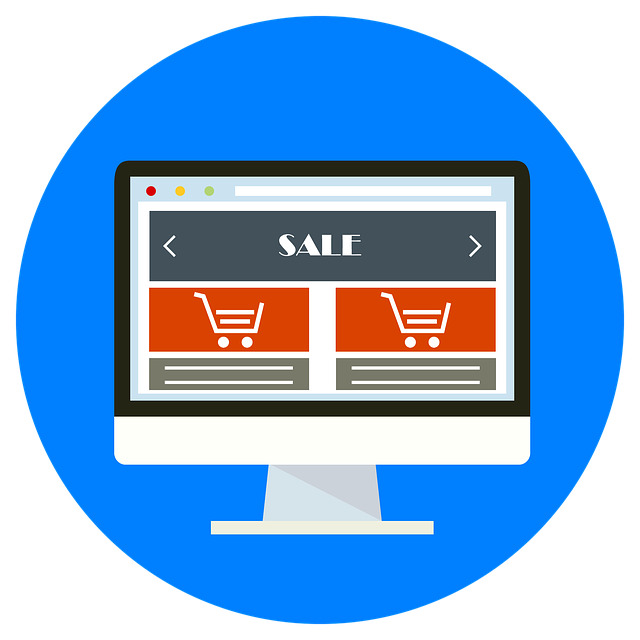Creating a successful e-commerce website relies on user-friendly interfaces and captivating product presentations, achievable through powerful platforms like Shopify and WooCommerce. Both offer customizable templates and drag-and-drop builders for businesses of all sizes. Key features such as high-res imaging, detailed descriptions, customer reviews, and secure payment gateways build trust and drive engagement. Shopify stands out with its intuitive interface, robust tools, and seamless hosting, while WooCommerce, an open-source option, provides unparalleled customization flexibility but requires more technical expertise. Ultimately, a well-structured site architecture, optimized for user experience (UX) through intuitive navigation and streamlined checkout processes, is crucial for boosting sales in the competitive digital marketplace. Visual branding, engaging design, and strategic product page optimization further enhance the ecommerce website design's effectiveness.
In today’s digital age, an engaging e-commerce website design is essential for businesses aiming to thrive online. This comprehensive guide will walk you through the process of creating a robust online store using industry leaders Shopify and WooCommerce. From selecting the right platform based on features, pricing, and ease of use, to implementing best practices in site architecture, visual branding, product page optimization, mobile responsiveness, SEO strategies, security measures, marketing tactics, and performance tracking—we’ve got you covered. Master these aspects, and you’ll be well on your way to designing a high-performing e-commerce website.
# E-commerce Website Design: A Comprehensive Guide Using Shopify and WooCommerce

Creating an effective ecommerce website design is paramount for success in the digital marketplace, and platforms like Shopify and WooCommerce simplify this process. Both offer robust tools that cater to various business needs, from small startups to established brands. A well-designed site not only enhances user experience but also encourages conversions by presenting products appealingly and efficiently.
Shopify and WooCommerce provide customizable templates, allowing businesses to choose a look that aligns with their brand identity. These platforms also offer intuitive drag-and-drop builders, making it easy to arrange elements without coding knowledge. Additionally, features like high-quality product imaging, detailed descriptions, customer reviews, and seamless payment gateways contribute to building trust and fostering engagement, ultimately driving sales in an increasingly competitive ecommerce landscape.
<section id="choosing-the-right-platform–shopify-vs-woocommerce“>
Choosing the Right Platform: Shopify vs WooCommerce

When it comes to setting up an online store, choosing the right e-commerce platform is a pivotal decision that can make or break your business’s success. Two popular contenders in this space are Shopify and WooCommerce—each with its unique strengths and weaknesses. For users seeking a comprehensive, user-friendly solution, Shopify offers a robust ecosystem complete with website design tools tailored for e-commerce, making it an excellent choice for businesses of all sizes. Its seamless integration of hosting, security, and scalable infrastructure allows entrepreneurs to focus on growing their brand rather than managing technical complexities.
On the other hand, WooCommerce is an open-source platform that provides greater customization options and flexibility for developers or tech-savvy users. While it may require more time and expertise to set up, WooCommerce empowers businesses with advanced control over every aspect of their online store, from product display to payment gateways. For those prioritizing cost-effectiveness and the potential for extensive customization, WooCommerce presents a compelling case, especially if you have specific design requirements or want to build a unique, highly tailored e-commerce experience.
– Comparison of key features, ease of use, customization options, and pricing models.

When comparing Shopify and WooCommerce, two popular e-commerce platforms, several key factors come into play, especially for those looking to build a visually appealing and functional online store. In terms of e-commerce website design, both offer robust tools, but Shopify stands out with its drag-and-drop editor, making it incredibly easy for non-technical users to craft professional-looking sites without coding knowledge. WooCommerce, on the other hand, provides extensive customization options through its open-source nature, allowing developers and designers to create unique, tailored stores.
In terms of ease of use, Shopify simplifies the entire process with its all-in-one approach, encompassing hosting, security, and transactional fees within its subscription plans. This simplicity is ideal for small businesses or entrepreneurs who want a hassle-free setup. WooCommerce, however, offers flexibility but requires more technical expertise. Its pricing model is based on the plugin ecosystem and server resources, which can be more complex and costly for beginners. Yet, for larger enterprises with specialized needs, WooCommerce’s open-source nature provides room for extensive customization and cost optimization.
<section id="site-architecture-and-user-experience-(ux)-design“>
Site Architecture and User Experience (UX) Design

A well-designed site architecture is paramount for any successful ecommerce website, serving as the backbone for a seamless user experience (UX). Platforms like Shopify and WooCommerce offer robust tools to create intuitive navigation, ensuring customers can effortlessly browse products, compare options, and complete purchases. A structured layout, clear call-to-actions, and efficient checkout processes are key elements that facilitate user engagement and conversions.
Ecommerce website design should prioritize simplicity and visual appeal, balancing product presentation with easy access to essential information. Both Shopify and WooCommerce provide customizable templates and themes, allowing businesses to craft a unique online store that aligns with their brand identity. By focusing on UX design best practices, merchants can create an inviting environment that encourages browsing, fosters trust, and ultimately drives sales.
– Best practices for site navigation, product categorization, and creating a seamless checkout process.

An effective ecommerce website design relies heavily on intuitive site navigation, logical product categorization, and a streamlined checkout process to enhance user experience and drive conversions. On Shopify or WooCommerce, merchants should leverage robust menu structures, clear breadcrumbs, and well-organized product collections to ensure customers can effortlessly browse and discover products. Categorize items based on relevant criteria like type, brand, or price to facilitate quick filtering and searching. A seamless checkout process is equally vital; simplify forms with guest checkout options, offer multiple payment methods, and optimize the layout for faster completion.
Integrate user reviews, social proof, and high-quality visuals throughout to build trust and inspire confidence in potential buyers. Additionally, implement smart search functionality, auto-complete suggestions, and live chat support to provide real-time assistance. By focusing on these best practices, ecommerce retailers can create engaging, user-friendly sites that encourage browsing, simplify purchasing, and ultimately, boost sales.
<section id="visual-branding-and-aesthetics“>
Visual Branding and Aesthetics

A compelling visual branding and aesthetics are paramount for an ecommerce website design to captivate and convert visitors into customers. Platforms like Shopify and WooCommerce offer a wide array of customizable templates, allowing businesses to create visually appealing stores that reflect their brand identity. From color schemes and fonts to layout and imagery, these tools enable entrepreneurs to craft unique shopping experiences that leave a lasting impression.
Effective visual branding incorporates elements that align with a brand’s values and target audience. Shopify’s drag-and-drop editor and WooCommerce’s extensive theme library streamline the process of implementing custom designs. By focusing on high-quality visuals, intuitive navigation, and seamless user experiences, ecommerce platforms empower businesses to create not just online stores, but compelling destinations where customers can explore and engage with their products.
– Tips for designing an engaging, consistent brand identity across your e-commerce website.

Creating a cohesive and captivating brand identity is essential for any successful e-commerce website. Start by defining your unique selling points and the emotions you want to evoke in your target audience. Consistency is key; ensure your branding, including colors, fonts, and imagery, remains uniform across all pages and platforms. A well-designed logo and a clear, compelling brand message will set the tone for an engaging user experience.
When designing your ecommerce website, consider a clean, intuitive layout that highlights your products or services effectively. Use high-quality visuals and incorporate interactive elements to enhance user interaction. Regularly review and update your design to stay relevant and capture the attention of returning customers. Remember, a strong brand identity not only leaves a lasting impression but also fosters trust and loyalty, ultimately driving conversions.
<section id="product-page-optimization“>
Product Page Optimization

Optimizing product pages is a critical aspect of e-commerce website design, as it significantly impacts user experience and conversion rates. Shopify and WooCommerce, two popular e-commerce platforms, offer various tools to enhance product page layout and content. The key lies in presenting products with high-quality visuals, concise yet informative descriptions, and strategically placed call-to-action buttons. By incorporating rich media, such as videos or 360-degree views, shoppers can better appreciate the product, fostering confidence in their purchase decisions.
E-commerce website design experts recommend structuring product pages with a clear hierarchy. This includes featuring essential product information upfront, such as pricing and key features, followed by detailed descriptions and customer reviews. Utilizing responsive design principles ensures that product pages are optimized for all devices, providing a seamless browsing experience across desktops, tablets, and smartphones. Regularly testing and refining these elements can lead to improved engagement and higher sales, solidifying the platform’s position in the competitive e-commerce landscape.
– Strategies to enhance product descriptions, high-quality visuals, reviews, and call-to-actions (CTAs).

To elevate your e-commerce website design and boost sales, focus on crafting compelling product descriptions that highlight key features and benefits using keyword-rich language, while also telling a story that resonates with customers. Enhance visuals by incorporating high-resolution images from multiple angles, 360-degree views, and even videos to showcase products in action. User-generated content like customer reviews and social media shares build trust and credibility, so encourage satisfied shoppers to share their experiences.
Effective calls-to-action (CTAs) guide visitors towards the next step, whether it’s “Add to Cart,” “Pre-order Now,” or “Learn More.” Position CTAs strategically throughout your ecommerce website design—on product pages, in banners, and within content—using contrasting colors and compelling language to create a sense of urgency. A/B testing different CTA variations can help you refine your approach and maximize conversions.
